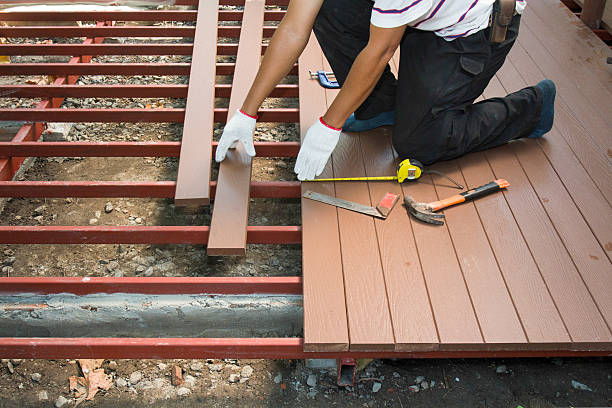Have you ever walked on a deck that felt a little shaky or uneven? It’s more common than you think, and it usually comes down to how the posts are secured. Deck posts provide the structural support that keeps everything in place. If something goes wrong here, the entire deck is at risk.
When professionals secure a post to a wooden deck, they follow proven techniques to avoid the most common and costly mistakes. That’s because even small errors in attachment, alignment, or materials can lead to big safety issues. In this article, we’ll cover seven such key missteps and why relying on experienced contractors is the smartest way to prevent them.
-
Using the Incorrect Fasteners
The wrong fasteners are one of the leading causes of deck post failure. Regular nails or untreated screws aren’t built to withstand outdoor exposure. They rust, loosen, and eventually break down. Professionals use stainless steel or hot-dipped galvanized hardware that resists moisture and corrosion. They understand which sizes and types are right for your deck’s framing and load needs. This critical but straightforward decision protects your investment long term.
-
Skipping Post Bases or Brackets
Some posts are installed directly onto deck surfaces without proper brackets. This may save time upfront, but it leads to instability over time. The post base absorbs moisture and slowly weakens. Experts know that every post must have a secure, elevated base or bracket, one that transfers load into the framing below. These components are not optional. They’re part of your deck’s safety structure.
-
Post Misalignment
Posts that lean, tilt, or sit at uneven intervals aren’t just unsightly; they’re unsafe. Misalignment can affect railings, cause stress on connections, and lead to code violations. Contractors rely on precise measuring tools and layout systems to ensure posts are evenly spaced and perfectly vertical. Proper alignment isn’t guesswork; it’s a critical part of professional installation.
- Lack of Moisture Protection
Wood exposed to moisture will eventually rot, no matter how strong it starts. Deck posts often fail because they’re installed without any moisture barrier at the base. Experienced builders apply weatherproof sealants, flashing tape, and hardware designed to lift posts off the surface. This allows airflow and prevents water from being trapped. It’s an essential protection step done right the first time.
-
Weak Connections to Deck Framing
Attaching posts only to deck boards is a serious error. Boards aren’t designed to bear structural weight or resist lateral force. Over time, this kind of shortcut can cause complete failure. Professional installers bolt posts directly to deck joists or beams. They use hardware approved for load-bearing use. That kind of solid attachment ensures your deck won’t shift, sag, or fail under pressure.
-
Inadequate Footings and Support
Deck posts must be supported from the ground up. However, in some cases, they’re placed directly on concrete blocks or soil, which can lead to shifting, sinking, or frost heaving. Professionals build code-compliant footings that go below the frost line and distribute weight properly. They know how to evaluate soil, drainage, and slope to design a lasting, stable base.
-
Not Following Code or Manufacturer Guidelines
Strict codes govern how to install deck posts, brackets, fasteners, and railings. Ignoring them risks structural failure and liability if someone gets hurt. Experienced contractors stay updated with local codes and product guidelines. They use the right tools, materials, and methods to build a structure that passes inspection and keeps people safe.
Securing deck posts the right way is not something to leave to chance. To safely secure a post to a wooden deck, you need more than the right hardware; you need the right hands to do the work. From fasteners to framing to footings, professionals can help you avoid the most common and dangerous mistakes. A deck built by experts can be stronger, safer, and longer-lasting.

